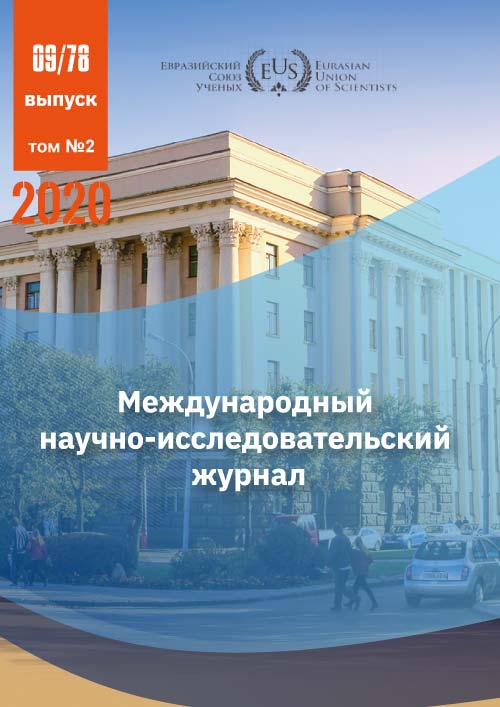PSYCHOPHYSIOLOGICAL CRITERIA FOR ASSESSING THE PROFESSIONAL SUITABILITY AND RELIABILITY OF CANDIDATES FOR SERVICE FOR WORK IN HAZARDOUS CONDITIONS
Abstract
The article discusses the results of psychophysiological studies of professional suitability and reliability of candidates for service in law enforcement agencies.The effectiveness of professional selection for work (service) in special conditions is determined by a complex of factors that are physiological and psychological in nature, of which the most important are social and psychological reliability and resistance to psycho-emotional stress.Sociopsychological reliability includes a survey using a polygraph, which today is a recognized method for revealing hidden information. The use of evoked potentials of the brain in tasks identify persons hiding drug use is important in order to ensure security. In the framework of the standard paradigm of polygraph most interesting is videooculography(aytracker).The possibility of using the EEG potential and the aytracker during the personnel checks along with the polygraph was studied.
References
2. ИзмеровН.Ф., МатюхинВ.В., ЮшковаО.И. Стресснаработе //Безопасностьимедицинатруда.2001.- №3.- С.32-37.[ Izmerov N.F., Matyuhin V.V., YUshkova O.I. Stress narabote. Bezopasnost' imedicinatruda. 2001. 3: 32-37. (InRuss).]
3.Измеров Н.Ф., Тихонова Г.И. Проблемы здоровья работающего населения России // Проблемы прогнозирования. 2011. № 3 (126). С. 56–70.[Izmerov N.F.,
TihonovaG.I.Problemyzdorov'yarabotayushchegonase leniyaRossii. Problemyprognozirovaniya.2011. 3
(126): 56–70. (InRuss).]
4.Zeppegno, Patrizia, Gramaglia, carlamaria. Guerriero, Chiara et al. (2020). Psychological/psychiatric impact of the novel coronavirus outbreak: lessons learnt from China and call for timely crisis interventions in Italy. 10.31234/osf.io/z26yk.
5. Жбанкова О.В., Гусев В.Б., Сазонова А.А. Использование зрительных вызванных потенциалов для выявления скрываемой информации об употреблении наркотиков // Казанский медицинский журнал. 2014. Том: 95. №5. С.664-669. [Zhbankova O.V.,Gusev V.B., Sazonova A.A.Ispol'zovaniye zritel'nykh vyzvannykh potentsialov dlya vyyavleniya skryvayemoy infrmatsii ob upotreblenii narkotikov // Kazanskiy meditsinskiy zhurnal. 2014.Tom:95 №5. S.664-669.(In Russ).]
6. Барабанщиков В.А., Жегалло А.В. Айтрекинг. Методы регистрации движений глаз в психологических исследованиях и практик., М.: Когито-центр.2014. [Barabanshchikov V.A., Zhegallo A.V. Aytreking. Metody registratsii dvizheniy glaz v psikhologicheskikh issledovaniyakh i praktike.M.: Kogito-tsentr, 2014.(In Russ).]
7.Cook, A. E., Hacker, D. J., Webb, A.K., Osher, D., Kristjansson, S., Woltz, D. J., Kircher, J. C. Lyin’Eyes: Ocularmotor Measures of Reading Reveal Deception. Journal of Experimental Psychology.2012.Applied. 18(3).
8.Kircher J. C. et al. Deception detection using oculomotor movements. US Patent Application Publication №2010/0324454 А1 Pub.Data: Dec.23.2010.
9.Жбанкова О.В., Гусев В.Б. Применение айтрекинга в практике профессионального отбора кадров //Экспериментальная психология. 2018. Том: 11 №1. С. 156-165.[ZhbankovaO.V., GusevV.B. Primeneniyeaytrekingavpraktikeprofessional'nogootbo rakadrov
//Eksperimental'nayapsikhologiya.2018.Tom: 11 №1. S. 156-165.(In Russ).] 10. Мягких Н.И. Современные методические и критериальные подходы к экспертизе профессиональной психологической пригодности в органах внутренних дел Российской Федерации. //Медико-психологическое обеспечение органов внутренних дел Российской Федерации, М.. 2008. с. 12.[Myagkix N.I. Sovremenny`emetodicheskie i kriterial`ny`epodxody` k e`kspertizeprofessional`nojpsixologicheskojprigodnost i v
organaxvnutrennixdelRossijskojFederacii. //Mediko-psixologicheskoeobespechenieorganovvnutrennixdelR ossijskojFederacii. M. 2008:. 12.(In Russ).]
11. Vendemia J. M.C. Detection of deception // Polygraph. 2003. 32 (2). 97–106;
12. Farwell L.A., Donchin E. «Детектормозга». P300 в распознавании обмана.Psychology. 1986; 23, (4).
13. Rosenfeld J.P. Scaled P300 Scalp Profiles in Detection of Deception. September 2002. Report No. DoDPI02-R-0005.Department of Defense Polygraph Institute, Fort Jackson; SC 29207-5000.
14. Bruce D. Bartholow, Brad D. Bushman, Marc A. SestirChronic violent video game exposure and desensitization to violence. Behavioral and eventrelated brain potential data.Journal of Experimental Social Psychology.2006; 42: 532–539.
15. Christopher R. Engelhardt , Bruce D. Bartholow , Geoffrey T. Kerr et al. This is your brain on violent video games: Neural desensitization to violence predicts increased aggression following violent video game exposure.Journal of Experimental Social Psychology 2011.www.elsevier. com/locate/jesp.
16. Алексеев Л.Г. Психофизиология детекции лжи.М.. 2011.[Alekseev L.G.Psixofiziologiyadetekciilzhi, M., 2011. .(In Russ).]
17. Patnaik P., Woltz D., Hacker D. et al. Generalizability of an Ocular-Motor Test for Deception to a Mexican Population. InternationalJournalofAppliedPsychology.2016.
CC BY-ND
A work licensed in this way allows the following:
1. The freedom to use and perform the work: The licensee must be allowed to make any use, private or public, of the work.
2. The freedom to study the work and apply the information: The licensee must be allowed to examine the work and to use the knowledge gained from the work in any way. The license may not, for example, restrict "reverse engineering."
2. The freedom to redistribute copies: Copies may be sold, swapped or given away for free, in the same form as the original.







